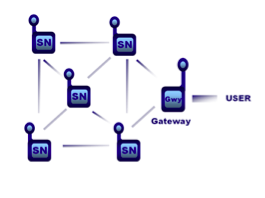Submitted by L. Millard on Mon, 18/07/2016 - 15:17
CSIC introduces an occasional series of Q&A sessions to showcase the expertise and innovation of its Industry Partners. Simon Maddison, Chief Operating Officer at Senceive, launches the series.

What does Senceive do?
Senceive develops and deploys wireless Remote Condition Monitoring (RCM) solutions for rail and construction applications.
Describe the FlatMesh
FlatMesh is an innovative and easy to use platform that enables a wireless solution for a full range of geotechnical needs. Thousands are deployed every year across multiple fixed assets including tunnels, bridges, buildings, structures, mines, rail track beds and earthworks. The third generation platform allows wireless nodes to communicate highly efficiently together, affecting network-wide data transmission and 12-15 year battery life. Data is routed out of the network via a solar powered GSM/3G Gateway and requires no mains power. With data visualisation and client alerts Flatmesh is a totally integrated monitoring system.
Senceive’s mesh networks have a flat structure; every node synchronises immediately and communicates with its neighbours on an equal-status basis. As it is designed without hierarchy, there is no need for any specialised router or concentrator nodes (see below).

This enables simple and quick installation - additional nodes can be added and simply join the system to enable robust, self-organising operation. Extensive development of the node gives low-power consumption, yielding an unprecedented 12-15 years’ operational life, powering both high-precision sensors and wireless communications from a single D-cell battery.
In the event of a node failing or radio paths being blocked, data is automatically re-routed through multiple channels to ensure a seamless flow of information back to the user, with greater than 99.9% data transmission reliability. Senceive has integrated a range of different sensor types. A single node can now be fitted with three sensor interface modules and each of these modules can support different sensor types and applications, with one or more sensor channels.
What is a Vibrating Wire FlatMesh wireless sensor?
Senceive has developed a new class of geotechnical sensor interface called Vibrating Wire. Vibrating wire sensors are a very popular class of sensors for many geotechnical applications. They are both mechanically robust and less susceptible to electrical interference. Vibrating wire sensors are offered by many sensor vendors and can be used for measuring a wide variety of characteristics, including strain, pressure, temperature and displacement.
What are the potential applications and benefits to industry of the Vibrating Wire FlatMesh wireless sensor?
By incorporating support for vibrating wire sensors, Senceive has significantly opened up the range of uses for its FlatMesh wireless sensor system in geotechnical applications. This allows clients to save money on installation through reduced time and effort and importantly lessens many of the typical safety issues associated with maintaining wired systems.
What benefits did CSIC bring to the development of the Vibrating Wire FlatMesh wireless sensor?
Senceive has run a rigorous testing regime throughout the product development, which has provided a high degree of confidence in the exceptional quality of performance. CSIC was able to provide valuable assistance – at very short notice - in providing an independent and practical test environment at the engineering laboratories at the University of Cambridge. The test corroborated results and the skills and practical support CSIC provided were invaluable.
When is the Vibrating Wire FlatMesh wireless sensor expected to be on the market and how can industry register interest?
The technology is on the market now and ready to measure strain/crack/tilt/temperature/pressure changes on a structure, pore-water pressure in the ground or load variations in an anchor or a load cell.
For more information contact info@senceive.com and see Senceive.com.
